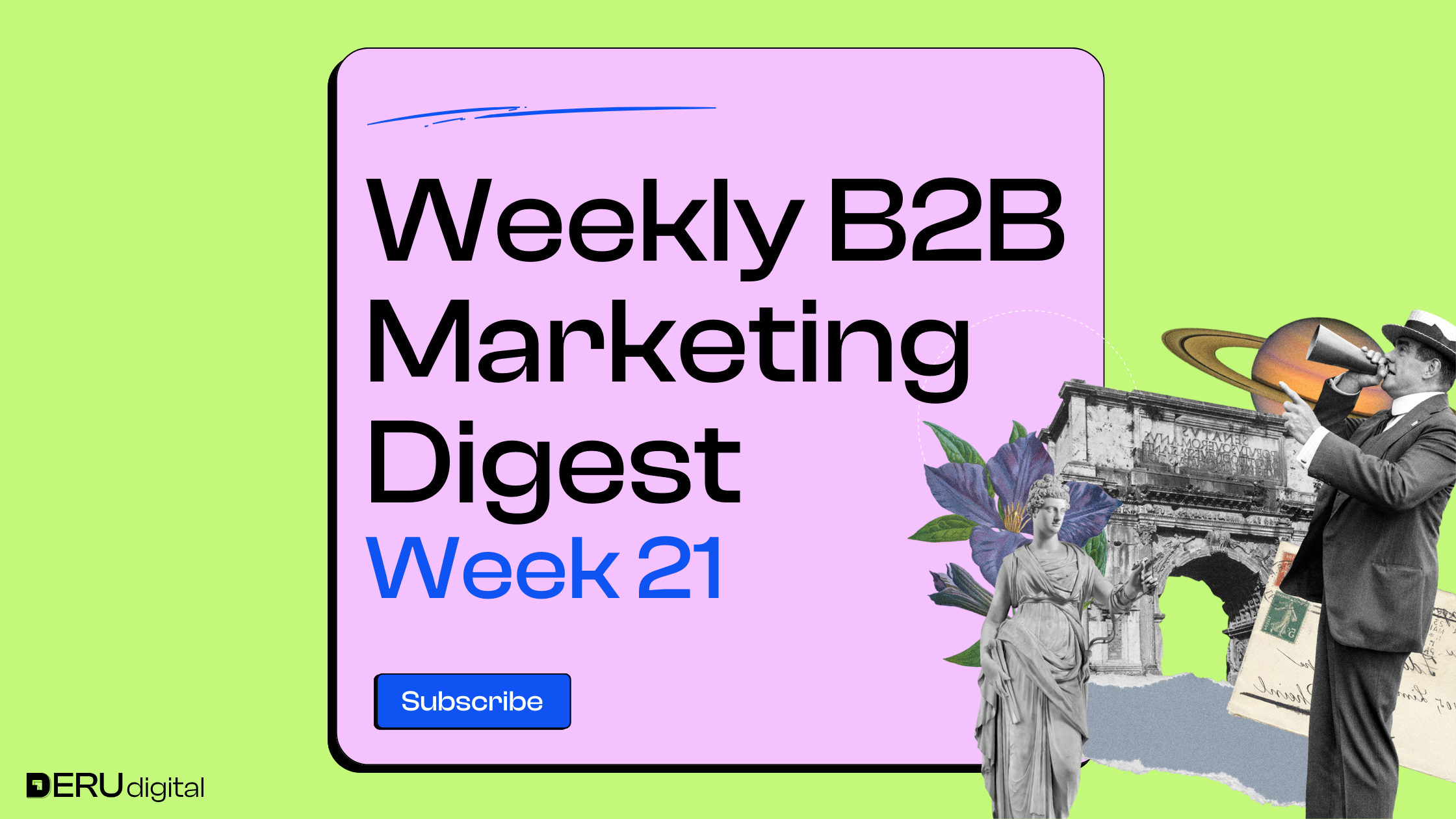
INSIGHTS FROM EXPERTS ON LINKEDIN
Casey Hill shares that when companies pause big paid ad campaigns, they often don’t see an immediate dip in sales, but things start to fall off six to twelve months later. The biggest impact tends to come from turning off LinkedIn ads, which help build long-term brand awareness. Cutting paid can give competitors a chance to take over attention in the market.
Megan Bowen explains that the old model of creating and capturing demand isn’t enough in today’s market. Buyers now expect trust, clear messaging, and confidence that your solution actually works. Building a strong brand, converting demand into pipeline, and turning customers into advocates all need to work together for real growth.
Elaine Zelby shares a simple checklist to figure out where your go-to-market strategy is breaking down. If no one’s visiting your site, you have an awareness issue; if people visit but don’t act, it’s likely a messaging problem. The key is to find exactly where things stall, whether it’s in the first meeting, POC, or legal, and focus on fixing that.
Ivars Krutainis 🦦 explains that traditional attribution often misses the real impact of channels like LinkedIn. In one case, a lead came in after multiple LinkedIn ad views, but the CRM didn’t track the conversion. He points out how last-click tracking can miss the bigger picture, especially when influence spreads across channels and people.

Tim Davidson argues that LinkedIn thought leader ads are a goldmine, even if you don’t have a big-name CEO posting. You can use influencer content, customer posts, or even advocates’ posts as thought leader ads, which build trust and get in front of the right buyers. He suggests that even small creators can have a big impact when paired with the right paid distribution.
Tuna Baysal breaks down how a potential 8-figure deal started with a year of LinkedIn ads, thousands of impressions, dozens of video views, before a single Google ad click finally led to a demo request. He highlights how last-touch attribution can mislead, and that long-term, content-first strategies on LinkedIn drive real results, even if the clicks don’t show up right away.

Thibault Garcia 🔸 shares that after 18 months and 1000+ hours of building Clay workflows, his team is giving away their full guide for free. The guide covers everything from Clay’s best use cases and AI tools to integrations and outbound strategies. He invites people to engage with the post to get access and learn from the team’s hard-earned insights.

Kerry Cunningham reminds us that buyers aren’t in your funnel when they start exploring options, they’re on their own journey, and you need to earn the right to be part of it. He says we should shift from thinking of prospects as moving through a company’s funnel, to understanding that we’re simply trying to participate in their buying process. It’s a mindset shift that changes how teams act and engage with buyers.

Travis Tyler shares a simple, no-nonsense framework for reporting ad performance: focus on top performers, dive deeper into specific creatives for insights, and then report on big-picture trends like funnel analysis and format performance. He says this approach works for most teams and urges marketers not to overcomplicate things.
WHAT'S NEW IN THE INDUSTRY
New research shows that B2B buyers shopping for GenAI tools aren’t doing deep evaluations; they’re acting fast and going with brands they already know. Most buyers consider fewer than three options, and 60% end up purchasing from an existing vendor. For marketers, the key isn’t having the best product, it’s being the brand buyers remember when the moment to act finally comes.

Search ad costs jumped nearly 13% in 2025, with most industries seeing higher CPCs, but better conversion rates are softening the blow. According to LocaliQ, 65% of industries are turning more clicks into leads, showing that rising prices don’t necessarily mean less ROI. With Google Ads evolving through AI tools and increased competition, smart strategy and high-quality conversions matter more than ever.

Google Ads is rolling out new AI features for Performance Max that automatically pull images from landing pages and enhance existing visuals, all managed only through the UI. These tools are designed to boost ad reach and performance with minimal manual effort, but advertisers using the API will need to adjust their workflows. With default opt-in, staying on top of your visual assets just became more automated and potentially more powerful.
Google has launched AI-powered agents in Ads and Analytics that act as expert collaborators, suggesting, creating, and managing campaigns in real time. These agents can recommend keywords, create ad groups, and provide insights from performance data, simplifying complex tasks for marketers. This marks a big shift in how advertisers interact with Google’s tools, but it raises questions about control and oversight in AI-driven campaign management.

Google’s new Smart Bidding Exploration tool uses AI and flexible ROAS targets to help advertisers unlock hidden conversion opportunities from overlooked search queries. Early results show an 18% increase in unique converting search queries and a 19% boost in total conversions. This move pushes advertisers to think beyond traditional keyword strategies and trust AI to find high-performing, less obvious searches.

Google has slashed the minimum audience size for customer match lists in Search campaigns from 1,000 users to just 100. This update makes advanced targeting more accessible to small and midsize businesses, helping them stretch their budgets and compete more effectively. It’s part of Google’s broader push to empower smaller advertisers with tools that were once only within reach for big brands.
That’s the scoop for this week! If you found this valuable and any useful insights caught your eye, feel free to share them with your network.
Until next week!



